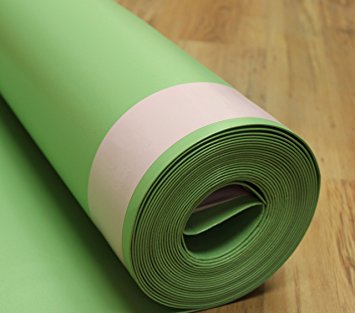As many wood flooring installation contractors know, choosing the best underlayment for wood floors makes a major difference to the finished product. Quality underlayment keeps moisture away and lessens sound issues.
Valuable products also help to maintain the durability of your wood floors, while installing the wrong type of underlayment could result in unattractive, even hazardous flooring. Find out how to choose well and ensure your floor replacement project is worth it.
What Type of Subfloor?
Subfloors dictate the best type of underlayment. Plywood subfloors require some protection against moisture, but experts advise against using impermeable or closed-cell underlayment. Wood subfloors need to breathe; installing a closed cell product on plywood traps moisture in the wood and could result in rot or mold growth.
Shop for permeable (rated 3 or more) or semi-permeable (rated between 0.7 and 2.9) underlayment for use with wood subfloors. These products are typically saturated with asphalt and require overlapped seams for durability.
Concrete subfloors, on the other hand, require an impermeable product (rated 0.15 or lower). This keeps moisture from absorbing through the underlayment and into the flooring planks. Condensation buildup and seepage naturally occur with concrete, and you need to protect your wood flooring from this occurrence. Remember to have the seams taped and stick to proper overlapping methods to ensure adequate protection.
What Type of Wood Flooring?
The type of wood flooring installed also influences your choice of underlayment. Floating engineered wood floors or solid-hybrid floors will use a padded underlayment such as Floor Muffler, while nail-down hardwood uses paper underlayment such as Aquabar-B or Silicone Vapor Sheild.
Floating wood floors work best over impermeable products aka padded underlayment, although installers may also choose to float a plywood subfloor (two layers thick) over the underlayment to allow for nailing planks. This method drives the cost up; consider investing in a high-quality floating wood floor for affordability and ease of installation.
Radiant Heating Included?
Wood flooring with radiant heating also requires underlayment, but certain types should be avoided due to temperature conditions. Skip any underlayment products with asphalt (many permeable and semi-permeable types) as the warmth of your heating system could create an unpleasant odor.
Remember to design for moisture protection, as the temperature changes that occur with radiant heating may increase the amount of condensation. If you’re looking for a specific underlayment for radiant heat, check with us.
Ask the Manufacturer
Always read through the flooring manufacturer’s directions when installing hardwood or engineered wood flooring. These installation instructions often provide advice about the ideal underlayment and proper installation methods for both underlayment and flooring planks.
Remember to read the manufacturer’s instructions for underlayment as well. These may include product-specific tips and warnings that apply to your project. Contact your flooring retailer or go directly to the manufacturer with any installation questions or concerns not covered in the directions.
Choosing the best underlayment for wood flooring results in a better finish and allows your flooring to last. The proper underpad provides high levels of sound insulation and moisture protection as well, helping consumers realize the value of this product.

